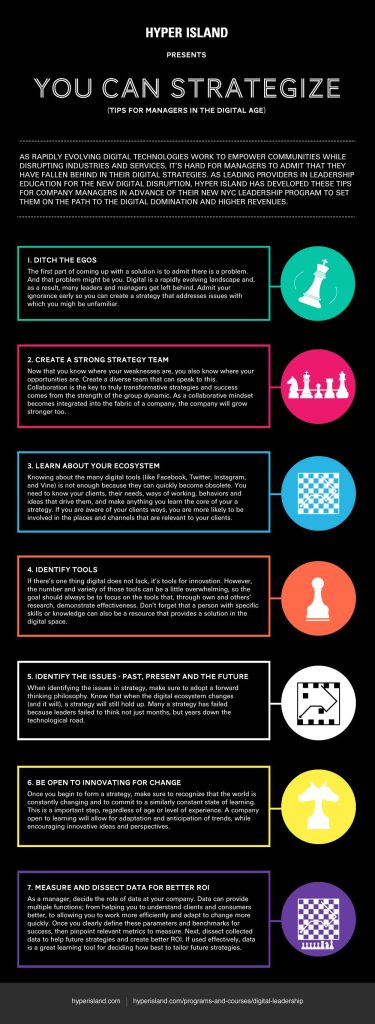Continuous Learning Strategies for Workplace Success and Growth

The Importance of Continuous Learning in Modern Workplaces
In today’s fast-paced and ever-evolving work environment, the ability to adapt through continuous learning is more crucial than ever. Organizations are increasingly recognizing that fostering a culture of ongoing education not only enhances employee performance but also drives overall business success. In fact, studies have shown that companies investing in employee development report significantly higher revenue per employee. This is not just about staying competitive—it’s a strategy for thriving in a dynamic marketplace.
Embracing the Growth Mindset
With rapid advancements in technology and changing market demands, the importance of a growth mindset cannot be overstated. This concept, often associated with psychologist Carol Dweck, refers to the belief that abilities and intelligence can be developed with dedication and hard work. Embracing a learning-oriented mentality allows professionals to seize opportunities and tackle challenges head-on. For instance, technology firms like Google and LinkedIn famously encourage a growth mindset, fostering innovation and resilience among their teams.
Top 5 Strategies for Cultivating Continuous Learning
In this article, we will explore the Top 5 strategies for cultivating continuous learning within the workplace. These strategies will empower you to transform your work culture and ultimately lead to personal and organizational growth.
- Encourage Open Dialogue: Promote an environment where questions and curiosity are welcomed. This builds trust and encourages employees to express their learning needs and ambitions.
- Invest in Training Programs: Regular workshops, online courses, and seminars keep employees up-to-date with industry trends and improve their skill sets.
- Foster Mentorship Opportunities: Pairing less experienced employees with mentors can accelerate learning and offer insights and guidance that textbooks might not provide.
- Support Cross-Functional Projects: Involving employees in cross-departmental projects enhances collaboration and provides diverse learning experiences.
- Utilize Technology: Leverage digital tools and platforms to make learning accessible and flexible, allowing employees to learn at their own pace and convenience.
Adopting these strategies not only strengthens the workforce but also contributes substantially to organizational resilience and innovation. As industries continue to transform, those who commit to learning will not only keep pace but will become leaders in their field. The journey of lifelong learning is not merely a personal endeavor; it’s an essential ingredient for success in the 21
RECOMMENDED: Check out this similar article
Top 5 Continuous Learning Strategies in the Workplace
In the dynamic business landscape of today, continuous learning has emerged as a cornerstone for sustaining professional growth and ensuring personal satisfaction. As industries evolve, the need for individuals and organizations to adapt through constant education cannot be overstated. Companies understand that nurturing a learning-centric workplace culture not only sharpens workforce skills but also enhances innovation and boosts productivity. Below, we delve deeper into the top five strategies for continuous learning in the workplace, offering a more comprehensive look into each method, ranked from five to one.

5. Leverage E-Learning Platforms
The digital age has revolutionized how education is delivered, with e-learning platforms standing at the forefront of this transformation. Popular platforms like LinkedIn Learning, Coursera, and Udemy offer a diverse range of courses that cover everything from intricate technical domains like data science and programming to entrepreneurial skills and leadership training. These platforms are highly flexible, designed to integrate seamlessly into busy professionals’ schedules.
E-learning’s appeal lies not only in its flexibility but also in its accessibility and potential for cost savings. Companies can provide these resources to their entire staff without the logistical constraints of physical classrooms. However, to maximize the effectiveness of e-learning, it requires participants to exercise a degree of self-discipline, as the asynchronous nature of these courses means that completion and retention largely depend on the learner’s motivation.
While these platforms offer convenience, they also pose challenges such as screen fatigue and the isolated nature of online study. Companies may consider supplementing e-learning with interactive sessions or cohort learning to encourage discussion and engagement.
4. Encourage Knowledge Sharing Sessions
Building a culture that prioritizes knowledge sharing is crucial for fostering an environment of continuous learning. Implementing structured programs like lunch-and-learns, cross-departmental workshops, and idea-sharing forums can significantly bolster learning and innovation. These sessions allow team members to share insights on new technologies, industry trends, and best practices, deepening their expertise while enhancing team cohesiveness.
To be effective, knowledge-sharing initiatives should be well-organized and encourage active participation. Companies can consider forming committees that rotate leadership roles, ensuring diverse participation and perspectives. This approach not only solidifies an employee’s understanding of their subject matter by teaching it but also creates a space where others can cultivate a broader understanding of topics outside their immediate expertise.
Social media and internal collaboration tools, such as intranets or corporate social networks, can serve as platforms for employees to continue these discussions, providing a repository of information and a venue for ongoing dialogue.
3. Offer Personalized Learning Plans
The concept of personalized learning plans is gaining traction as organizations realize that a one-size-fits-all model is ineffective in addressing diverse employee needs and aspirations. Personalized learning acknowledges that each employee has unique skills and goals by cultivating individualized pathways for development aligned with both personal ambitions and the strategic goals of the organization.
Setting up these learning plans involves a structured assessment of employee skills, interests, and potential. This process often includes collaboration between employees, their managers, and HR professionals to create bespoke educational experiences. These might comprise formal education courses, mentorship opportunities, or job rotations.
Moreover, personalized learning plans offer employees a sense of ownership over their professional growth, fostering a deeper commitment to both self-improvement and organizational success. It also reassures employees that the company invests in their future, which can drive higher retention rates and job satisfaction.
2. Create a Feedback-Rich Environment
A feedback-rich environment is integral not only to personal development but also to maintaining a forward-looking organizational culture. Constructive feedback, whether through formal performance reviews, informal check-ins, or peer evaluations, provides employees with insights into their performance and areas they might improve.
An environment where feedback flows naturally encourages continuous dialogue between managers and employees, fostering transparency and trust. It empowers employees to reflect, adjust approaches, and take proactive steps for growth. When feedback is embedded into the workplace culture, it feeds into the ethos of a growth mindset—a concept in which challenges are viewed as opportunities rather than setbacks.
Feedback should be carefully balanced, emphasizing opportunities while recognizing achievements. Regular training on delivering and receiving feedback can equip employees to give actionable insights and welcome criticism as an avenue for growth.
1. Foster a Growth Mindset
The leading strategy for enhancing continuous learning is fostering a growth mindset, a psychological edge that encourages viewing talents and abilities as malleable rather than fixed traits. When organizations champion growth over stagnancy, they inspire employees to take risks, innovate, and continuously pursue learning opportunities.
Promoting a growth mindset can be achieved through various initiatives, such as leadership development programs that teach resilience and adaptive decision-making, or via corporate narratives that celebrate stories of failure as stepping stones to success. Mentorship and team-building activities could further reinforce this ethos, allowing for experienced professionals to guide others through challenges they once faced.
Moreover, a growth-centric culture can lead to higher employee satisfaction, increased innovation, and better alignment with organizational objectives, ultimately contributing to a resilient and competitive business environment.
By investing in these continuous learning strategies, companies equip their employees not only with necessary skills but also with the mindset to navigate and succeed in ever-shifting market conditions. Emphasizing lifelong learning, combined with these strategies, positions organizations to remain at the forefront of industry innovation and success.
| Category | Advantages |
|---|---|
| Employee Engagement | Implementing continuous learning strategies can lead to higher levels of employee engagement. When employees feel that their development is prioritized, they are more likely to take ownership of their work and feel committed to their roles. |
| Adaptability to Change | A workforce that is continually learning is better equipped to adapt to changes in the industry. With ongoing training and skill development, employees are prepared to embrace new technologies and methodologies, thereby increasing organizational resilience. |
| Improved Performance | Regular training and development help employees to enhance their skill sets, which leads to improved performance outcomes. This can directly translate into higher productivity and better quality of work across various projects. |
| Talent Retention | Investing in continuous learning opportunities significantly increases talent retention. Employees are more likely to stay with an organization that supports their professional growth, reducing turnover costs and fostering a more stable work environment. |
RECOMMENDED: Check out this similar article
Frequently Asked Questions About Continuous Learning Strategies in the Workplace
What is continuous learning in the workplace, and why is it important?
Continuous learning in the workplace refers to the ongoing process of acquiring new skills, knowledge, and competencies that are crucial for professional growth. This approach is essential because it helps employees keep up with industry trends, improves job performance, and enhances innovation. The rapid pace of technological advancement means that workers must continually update their skills to remain competitive and relevant. Companies investing in continuous learning can foster a more adaptable and resilient workforce, enabling them to navigate changes with ease.
How can an organization implement a successful continuous learning strategy?
To implement an effective continuous learning strategy, organizations should start by assessing their current learning culture and identifying the skills needed for future growth. Developing a tailored strategy that includes personalized learning paths, leveraging technology for flexible learning solutions, and promoting a learning-first mindset are essential steps. Additionally, providing opportunities for on-the-job learning, encouraging collaboration, and establishing clear goals and metrics can ensure the strategy’s success. Senior management support and alignment with organizational objectives are also critical factors.
What are some tools and platforms available for continuous learning in the workplace?
There is an abundance of tools and platforms designed to facilitate continuous learning in the workplace. Learning Management Systems (LMS), such as Moodle, Canvas, and Blackboard, provide a structured environment for online education. Additionally, platforms like Coursera, Udemy, and LinkedIn Learning offer a wide range of courses that cater to different skill levels and industries. Employers can also utilize collaborative software, such as Slack and Microsoft Teams, to promote knowledge sharing and teamwork among employees. Integrating these tools into the workflow can create a more engaging and effective learning experience.
What challenges might organizations face when promoting continuous learning, and how can they overcome them?
Organizations may encounter several challenges when promoting continuous learning, such as resistance to change, limited resources, and the difficulty of measuring learning outcomes. To overcome these obstacles, it’s crucial to create a culture that values and rewards learning. This can be achieved by recognizing and celebrating achievements, providing incentives, and offering mentorship programs. Additionally, allocating time for learning during work hours and ensuring access to quality resources can address concerns related to time and budget constraints. Establishing a feedback loop can also help measure the effectiveness of learning initiatives and make necessary adjustments.
How does continuous learning benefit employees personally and professionally?
Continuous learning offers numerous benefits to employees, both in personal and professional realms. Professionally, it enhances skill sets, increases employability, and opens doors to new opportunities and career advancement. By staying informed about the latest industry developments, employees become more valuable assets to their organization and can contribute more effectively to its success. On a personal level, individuals experience increased confidence, job satisfaction, and the fulfillment that comes with mastering new skills and knowledge. As a result, continuous learning not only improves productivity but also contributes to overall well-being.
RECOMMENDED: Check out this similar article
Conclusion
In today’s rapidly evolving professional landscape, the need for continuous learning strategies in the workplace cannot be overstated. Throughout this article, we have explored various effective approaches that organizations can adopt to foster a culture of constant development. The primary takeaways include the integration of technology-driven learning platforms, the enhancement of coaching and mentoring initiatives, and the establishment of a mindset that embraces lifelong learning.
Emphasizing continuous learning cultivates a dynamic and adaptable workforce adept at tackling new challenges. By leveraging digital tools and resources, companies can offer personalized learning experiences tailored to their employees’ unique needs and career goals. Moreover, reinforcing these learning paths with interactive methodologies such as workshops and collaborative projects further solidifies knowledge acquisition and retention.
The role of leadership in this paradigm is pivotal as well. Leaders must champion a growth mindset, encouraging team members to prioritize skill development and knowledge sharing. In doing so, organizations not only enhance employee satisfaction but also ensure they remain competitive and innovative in an increasingly demanding market.
Ultimately, integrating these strategies into the organizational fabric leads to heightened productivity, creativity, and an engaged workforce. For companies aiming to thrive long-term, the commitment to continuous learning must become a cornerstone of their strategic vision. As we conclude this discussion, it is imperative for businesses to recognize the transformative power of learning and take proactive steps towards embedding it deeply within their corporate culture.
With these insights at hand, organizations are better prepared to navigate the complexities of the modern world, making continuous learning not just an option, but an essential pursuit.


